Mechanical doping used in Strade Bianche and Coppi e Bartali, claims investigation
Stade 2 TV programme and Corriere della Sera suggest UCI checks are not reliable

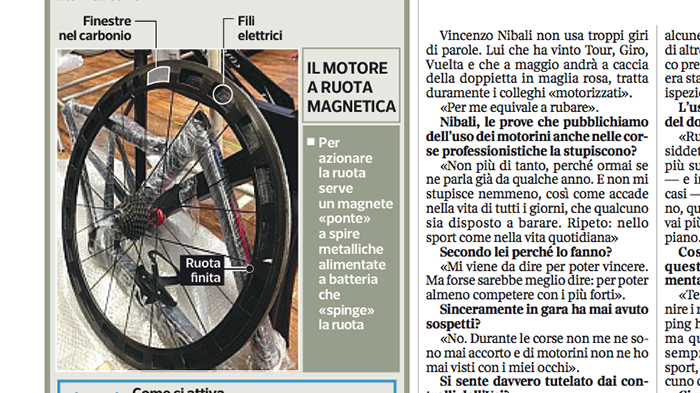
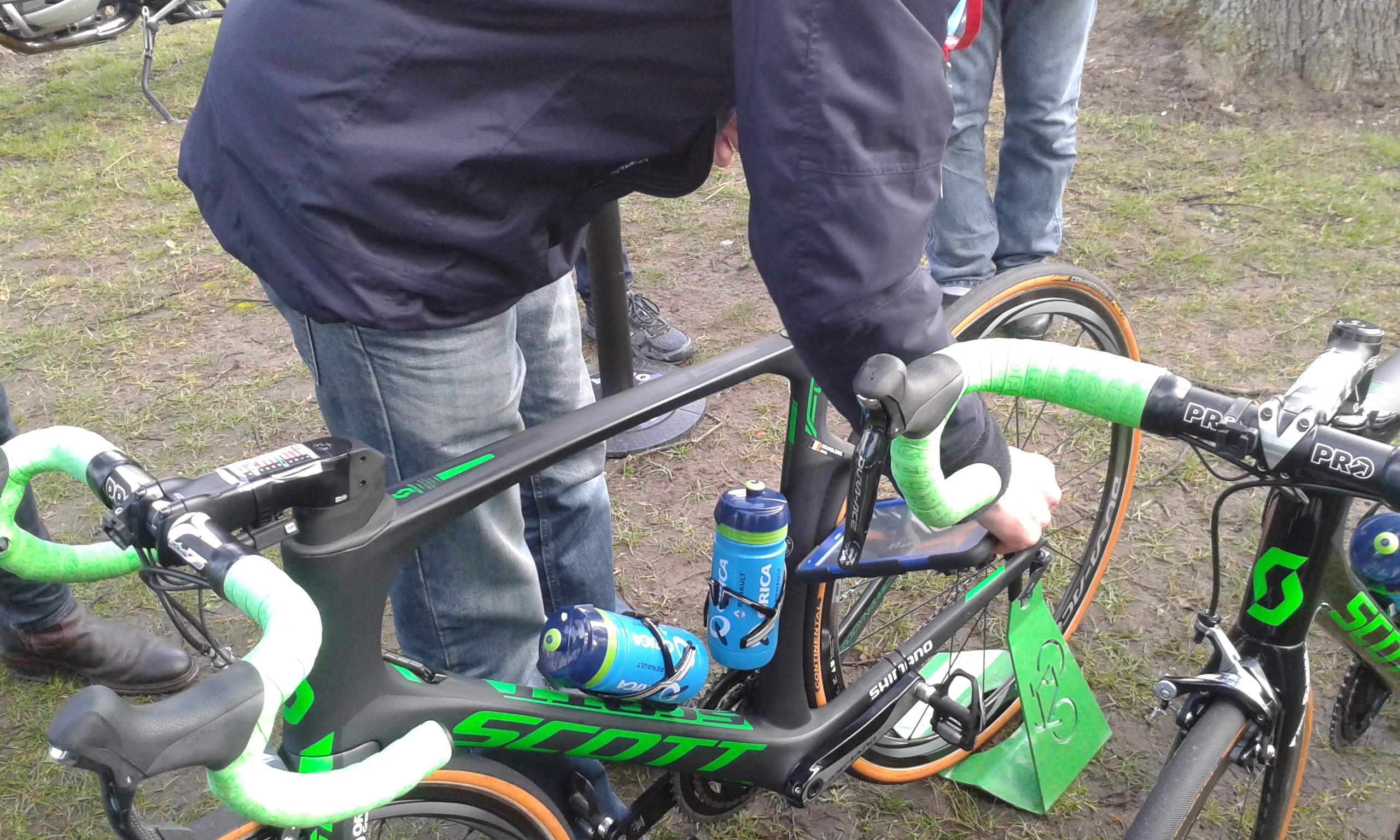
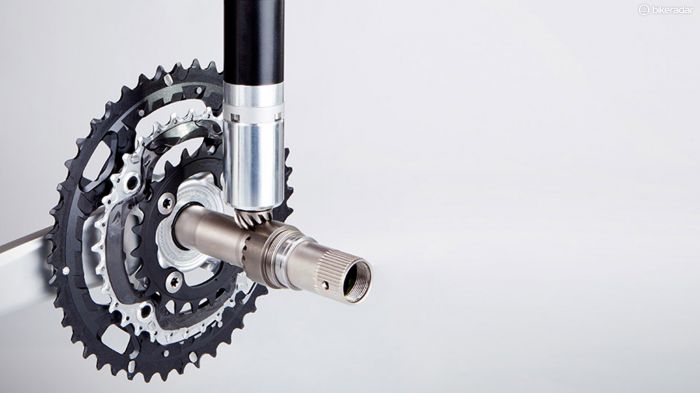
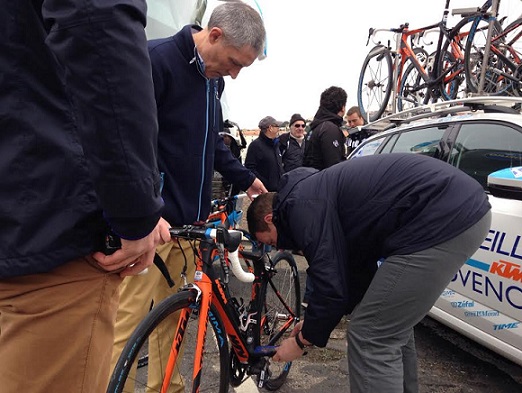
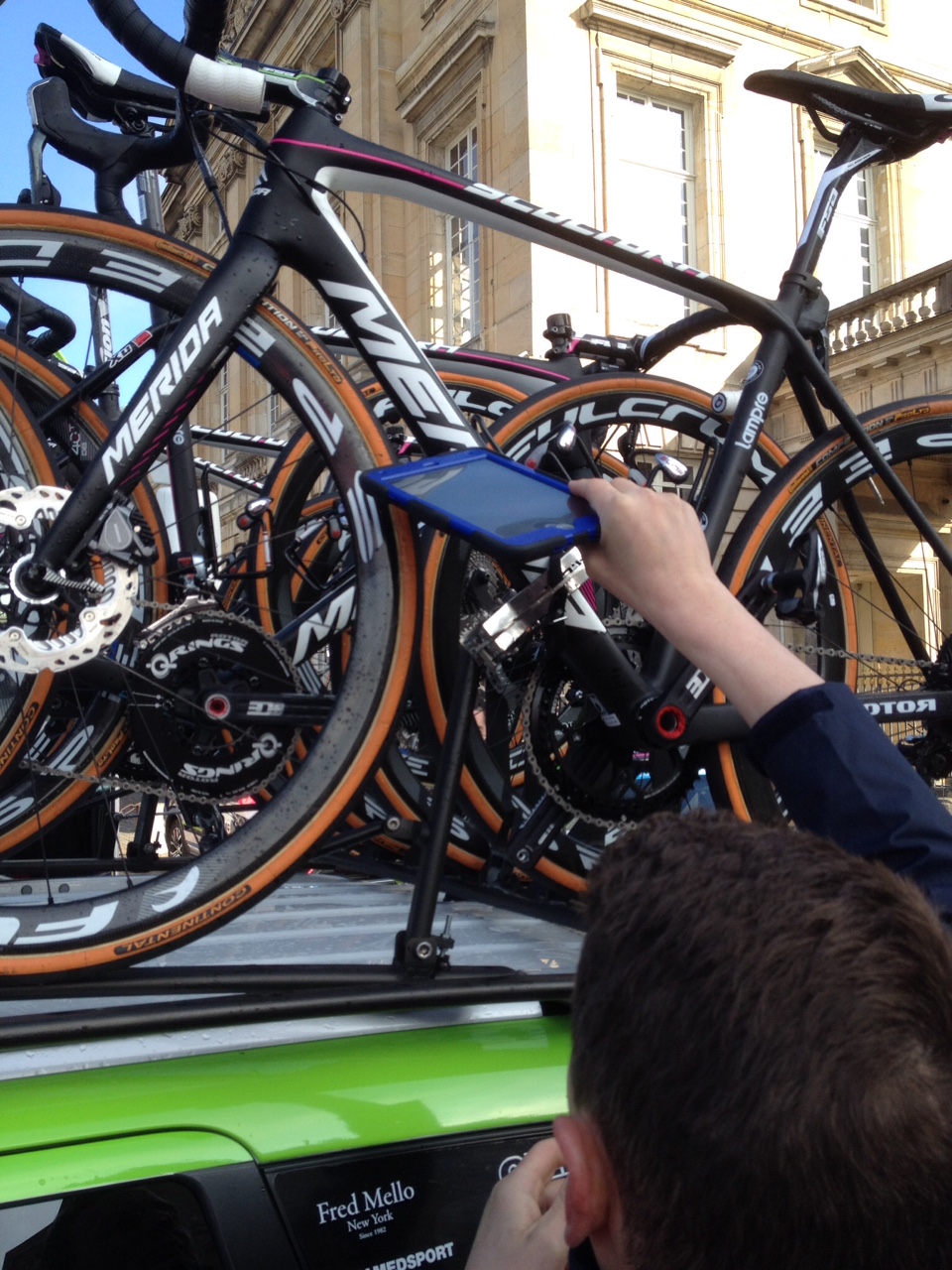
A detailed investigation into mechanical doping by French television programme Stade 2 and Italian newspaper Corriere della Sera has claimed that hidden motors are being used in professional road races.
Mechanical dopers should be heavily punished, says CPA
Van den Driessche stops defence against mechanical doping charge
UCI check ten teams for mechanical doping at Paris-Roubaix
UCI reacts to criticism in French and Italian media mechanical doping investigation
Bugno calls on UCI to use heat cameras to detect mechanical doping
Thierry Vildary and Marco Bonarrigo reveal that they used an expensive thermal detector to spot the heat created by what is believed to be hidden motors at both the Strade Bianche race in Tuscany and the Coppi e Bartali stage race. The full investigation was broadcast on Sunday evening on French television during the Stade 2 programme, with key details revealed in Sunday’s edition of Corriere della Sera newspaper in Italy.
The two-page article in Corriere della Sera claims that the thermal detector showed heat from five sources hidden in the seat tube, with two hidden in the rear hub and cassette. The newspaper report and Stade 2 video report did not name any riders involved. However the French report- which lasted more than 20 minutes, recalled the numerous suspicions and accusations of mechanical doping that have emerged in recent years. The results of the tests were confirmed by independent expert engineers, who ruled out that the heat could be created by electronic gear systems or other legal electronic parts.
Vildary and Bonarrigo also talked to Hungarian engineer Istvan Varjas, the alleged creator of the hidden motors and suspected supplier to a number of professional riders. Varjas showed an early rudimentary version of a motor and admitted it may have been used as early as 1998. He suggested that it best worked with an extremely high cadence.
Varjas explained that the latest version of the hidden motors are just five centimetres long, of light weight but able to produce an adjustable amount of power of up to 250 watts. They can drive the bottom bracket or the cassette and are described as ‘perfect for athletes with high pedal cadence.”
Varjas also confirmed that the most advanced form of mechanical doping is now hidden in carbon fibre rims, with neodymium magnets able to produce 60 watts of power. The wheels can be activated and modulated via a bluetooth device – even an expensive watch which has bluetooth – and can only be detected via a powerful magnetic field detector.
Varjas showed the journalists a special carbon fibre rim, with holes where the thin Neodymium magnetic plates are hidden. The spiral magnet is driven by a hidden battery in the seat tube and reportedly helps produce the 60 watts of power than can make a signficant difference on a major climb or in a tough race like Strade Bianche or Grand Tour mountain stages.
Get The Leadout Newsletter
The latest race content, interviews, features, reviews and expert buying guides, direct to your inbox!
The wheels reportedly cost 50, 000 Euro but are only made available to a very limited number of athletes.
Read more:
- What is mechanical doping?
- Electromagnetic wheels are the new frontier of mechanical doping, claims Gazzetta dello Sport
- LeMond: The UCI should use a heat gun to detect motors
- UCI confirms motorised doping uncovered at cyclo-cross World Championships
- UCI test Froome, Contador and Pinot bikes on Alpe d'Huez for mechanical doping
UCI tablet describe as 'not very reliable’
Rumours of the existence of special magnetic wheels first emerged last summer after several mysterious wheel changes in key races. The suspicions were never proven. In February Gazzetta dello Sport published an article that suggested the power produced by a magnetic wheel is enough to “transform an average level professional rider into a phenomenon."
During the winter the UCI introduced strict rules against what it describes as technological fraud and has carried out regular bike checks at the start of races using a blue tablet teslameter device that apparently detects magnetic fields.
However the UCI has refused to reveal just how effective the device is due to the difficulty in detecting a magnetic field, especially when a bike is not moving or on the roof of a team car. The Corriere della Sera article describes the UCI tablet has "not very reliable".
Last year Greg Lemond told Cyclingnews that the UCI should use a heat gun to detect mechanical doping, saying controls could be done during races.
At the UCI cyclo-cross world championships the UCI revealed that it discovered a case of mechanical doping involving the bike of Belgian Under-23 rider Femke Van den Driessche. A final verdict in her case is expected soon and she risks a hefty fine and ban from racing. Her team and Federation could also face sanctions. Corriere della Sera suggests the Van den Driessche case was uncovered because of a Belgian police investigation regarding another matter rather than a direct investigation of mechanical doping.
Cyclingnews saw Bonarrigo filming the UCI carry out pre-race bike checks before last week’s Paris-Roubaix. The UCI said that 196 bikes were checked but it seemed that bikes of only 10 of the 25 teams were checked pre-race. Other checks were done after the finish of the race, including the bikes of the riders that finished in the top three. However it appears that several major riders and teams were not checked before the start of Paris-Roubaix.
Cyclingnews contacted the UCI following the publication of the article in Corriere della Sera. The UCI confirmed it was aware of the programme and UCI President Brian Cookson was interviewed briefly and show some of the thermal images as part of the investigation.
Stade 2 created this teaser video to promote their full investigation programme.

Stephen is one of the most experienced member of the Cyclingnews team, having reported on professional cycling since 1994. He has been Head of News at Cyclingnews since 2022, before which he held the position of European editor since 2012 and previously worked for Reuters, Shift Active Media, and CyclingWeekly, among other publications.